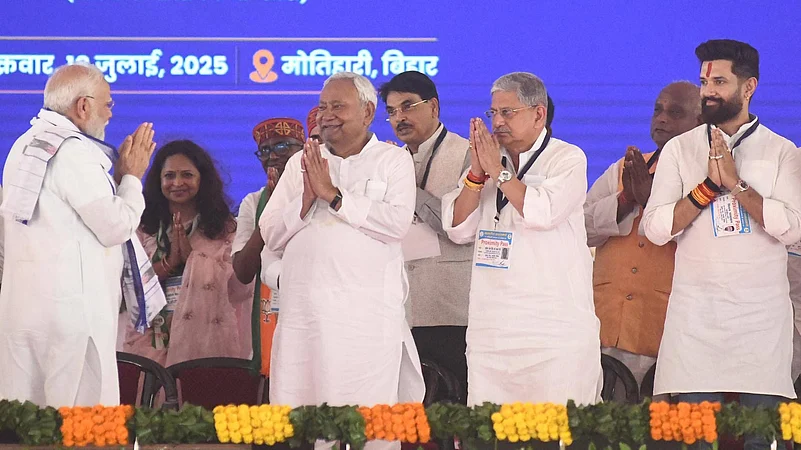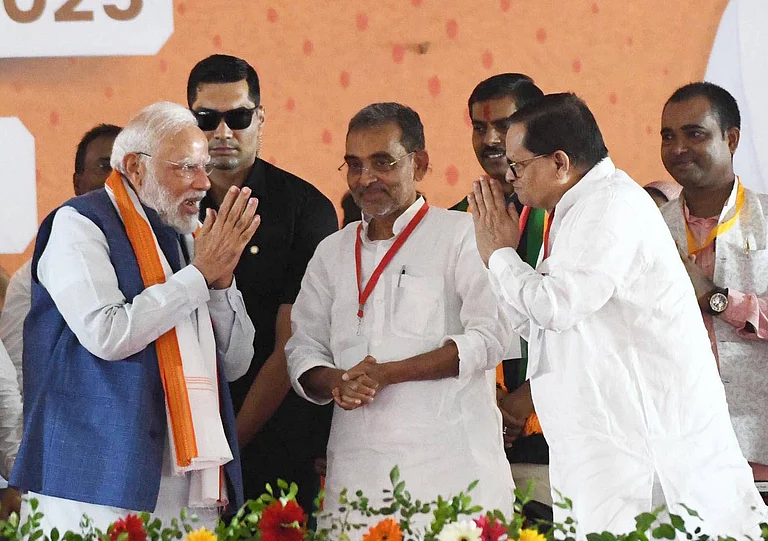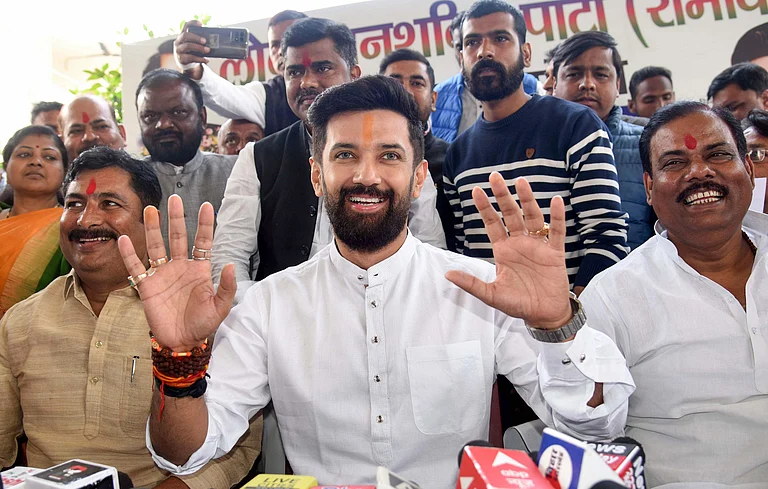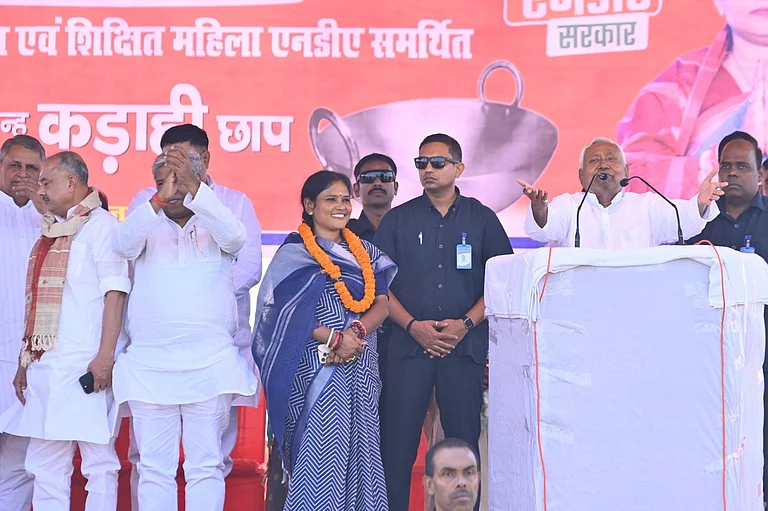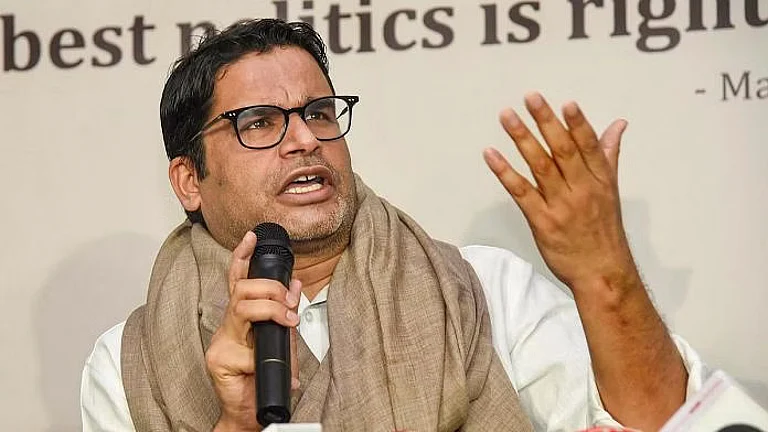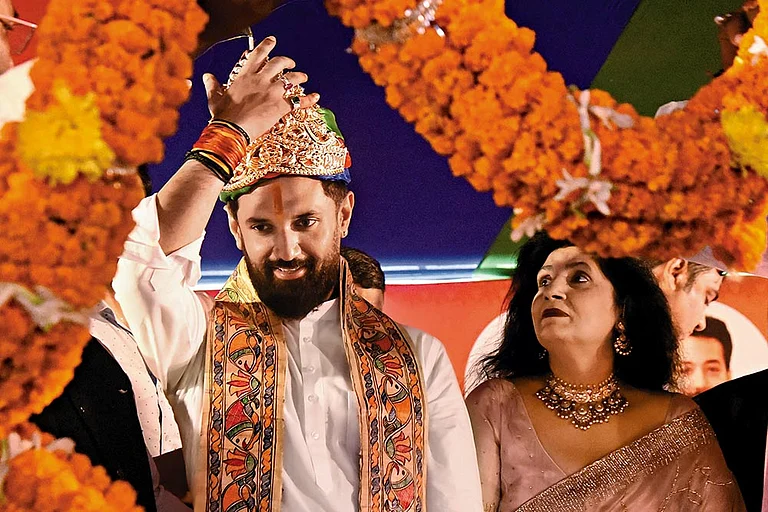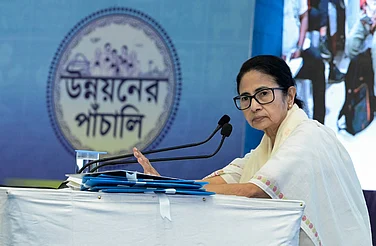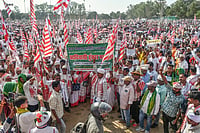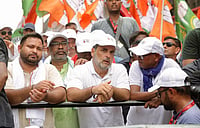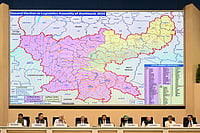
In the last Bihar Assembly election, the NDA narrowly defeated the Mahagathbandhan by just 12 seats, despite both alliances having nearly identical vote shares
With elections approaching, smaller NDA allies like Jitan Ram Manjhi’s HAM are demanding more seats — HAM threatens to contest 100 seats if not allotted at least 20, citing electoral viability and party recognition requirements.
While leaders like JD(U)’s Rajeev Ranjan Prasad stress coalition unity and mutual respect under PM Modi and CM Nitish Kumar, the smaller allies’ caste-based influence and past electoral impact give them significant leverage, keeping major partners cautious.
In the last Bihar assembly election, the National Democratic Alliance (NDA) may have kept the Grand Alliance (Mahagathbandhan) out of power and formed the government with a margin with just 12 seats, but both alliances had nearly identical vote shares. The NDA secured 37.26 per cent votes, while the Mahagathbandhan got 37.23 per cent, which is barely a 0.03 per cent gap―poll experts consider this negligible. It is precisely this thin margin that underlines the crucial role of smaller parties within the alliances.
As the assembly election season draws closer in Bihar, these smaller allies have begun to raise their voices more loudly. Until recently, it appeared there was harmony inside the NDA and the Mahagathbandhan alliances, but is now showing signs of friction, especially over seat-sharing.
The latest flashpoint comes from within the NDA. Jitan Ram Manjhi, leader of a coalition partner and Union Minister, declared that if his party does not get 20 seats, it will contest from 100. Manjhi argues that his party, the Hindustani Awam Morcha (HAM), needs at least eight assembly seats and six per cent of the vote share to gain official recognition, and this is possible only if it contests around 20 seats. The party claims to have influence across constituencies and asserts that if it contests 100 seats on its own, it can secure 10,000-15,000 votes in each of these seats.
At present, the NDA in Bihar consists of the Janata Dal-United JD(U), the BJP, Chirag Paswan’s Lok Janshakti Party (LJP-Ram Vilas), Jitan Ram Manjhi’s HAM, and Upendra Kushwaha’s Rashtriya Lok Morcha. The understanding is that the BJP and the JD(U) will each contest around 100 seats, leaving the remaining 43 to be divided among LJP (Ram Vilas), the HAM, and Kushwaha’s party.
Within this coalition, Chirag Paswan and Jitan Ram Manjhi both represent Dalit leadership and their rivalry often surfaces through sharp exchanges. Before Manjhi’s recent demand, Chirag Paswan’s party had even staked claim to the Chief Minister’s post. At different times, Chirag himself has spoken of contesting all 243 seats, while his MP Arun Bharti recently suggested that LJP (Ram Vilas) should at least get 43 seats.
Upendra Kushwaha, meanwhile, has also sought a “respectable” seat share, though he has consistently maintained that such demands should be raised in internal meetings rather than in the media.
In the last assembly election, the HAM contested seven seats within the NDA, won four, and lost deposit in one. According to the Election Commission, the party received 375,564 votes, or 0.89 per cent of the total.
In contrast, Chirag Paswan’s LJP (Ram Vilas) contested outside the NDA, fielding candidates in 135 seats, but managed to win only one—Matihani. In 110 seats, its candidates lost their deposits. The party secured 2,383,739 votes, amounting to 5.66 per cent of the overall vote share and 10.26 per cent in the constituencies where it contested.
The caste survey of 2023 revealed that Dalits constitute 19.65 per cent of Bihar’s population, with Paswans (5.31 per cent), Ravidas (5.25 per cent), and Musahars (3.08 per cent) forming the largest sub-groups.
The rivalry between Chirag Paswan and Jitan Ram Manjhi often reflects not only their fight for the Dalit leadership, but also their maneuvering for more seats in the alliance.
Shyam Sundar Sharan, the spokesperson of HAM, denies that this is a contest for Dalit supremacy. “It is an ideological battle,” he says. “No leader in the country can stand close to Manjhiji. Without his support, the NDA would have faltered in the Lok Sabha. In Bihar, we have a strong presence, particularly in the Magadh region, where we are dominant.”
On the demand for 20 seats, Sharan explains, “The message has already reached the BJP and the JD(U) through the media. We have identified specific constituencies and will place them before the NDA in upcoming meetings.” Asked whether the HAM would join the INDIA bloc if denied 20 seats, he says, “That situation won’t arise, but politics is always about options.”
Meanwhile, LJP (Ram Vilas) has not publicly stated a seat count, but is pressing for a share proportionate to its “100 per cent strike rate” in the last Lok Sabha election. Party spokesperson Rajesh Kumar Bhatt says, “The NDA knows our strength. We can transfer votes effectively. Wherever Chiragji stands, government formation follows. Hence, we should get seats where we are strong. Our perfect strike rate in the Lok Sabha polls justifies this demand.”
Both the HAM and the LJP (Ram Vilas) cite this “100 per cent strike rate”. In the last Lok Sabha polls, Chirag’s party won all five seats it contested, while Manjhi’s party won its lone seat.
Political observers believe these smaller parties are bargaining hard with bigger allies. They know that fighting alone might not yield even a single seat, but they can certainly spoil the BJP-JD(U)’s chances. In an election where the NDA’s margin was just 0.03 per cent last time, even a small shift in the Paswan-Musahar vote base, which together amounts to 8.33 per cent, could decide the outcome.
It is worth recalling that in 2020, the LJP’s decision to contest separately severely damaged JD(U), limiting it to just 43 seats.
Political analyst Ashish Ranjan argues that none of the NDA partners will actually leave. He describes the rhetoric of Manjhi and Paswan as pressure politics over seat-sharing. Yet he acknowledges their importance: “They have a base. Otherwise, the BJP would not accommodate them. Manjhi has a following among Musahars; Chirag has around five per cent from his caste base. In the last election, his party alone polled about 10 per cent. In Bihar, where contests are neck-to-neck, caste matters a lot. Even a two or three per cent swing can make or break the game,” says Ranjan
At one time, the NDA in Bihar was primarily a two-party affair between the JD(U) and the BJP, who together won successive elections. But since 2015, when Nitish Kumar allied with the Rashtriya Janata Dal (RJD) and the Congress to form the Grand Alliance, both the NDA and the Mahagathbandhan have expanded into multi-party coalitions.
Recently, Union Home Minister Amit Shah met with Chief Minister Nitish Kumar during a Bihar visit, reportedly discussing seat-sharing arrangements.
On this issue, the JD(U) national spokesperson Rajeev Ranjan Prasad said, “Every party naturally wants to contest more seats. But in a coalition, decisions are collective. The five partners of our alliance have worked together for long and achieved excellent results in the Lok Sabha polls. Whether large or small, all allies are important. There is no discord. Under Prime Minister Narendra Modi, there is complete unity nationally, and in Bihar, everyone agrees that Nitish Kumar is the leader and face.”
The smaller NDA allies may not risk leaving the coalition, but their bargaining power—rooted in caste arithmetic and past disruptions—makes them both potential game changers and game spoilers, keeping the BJP and the JD(U) on the edge







